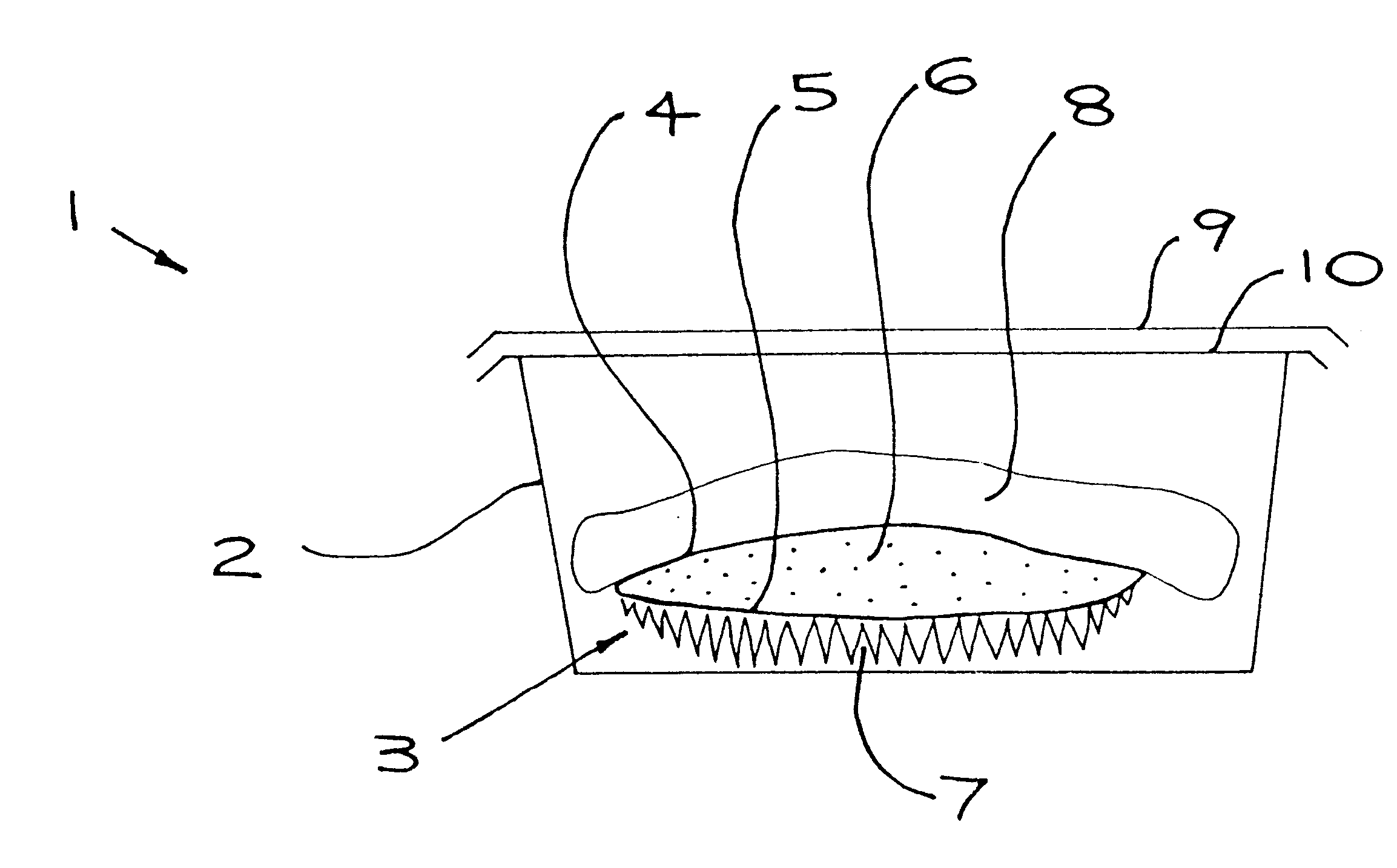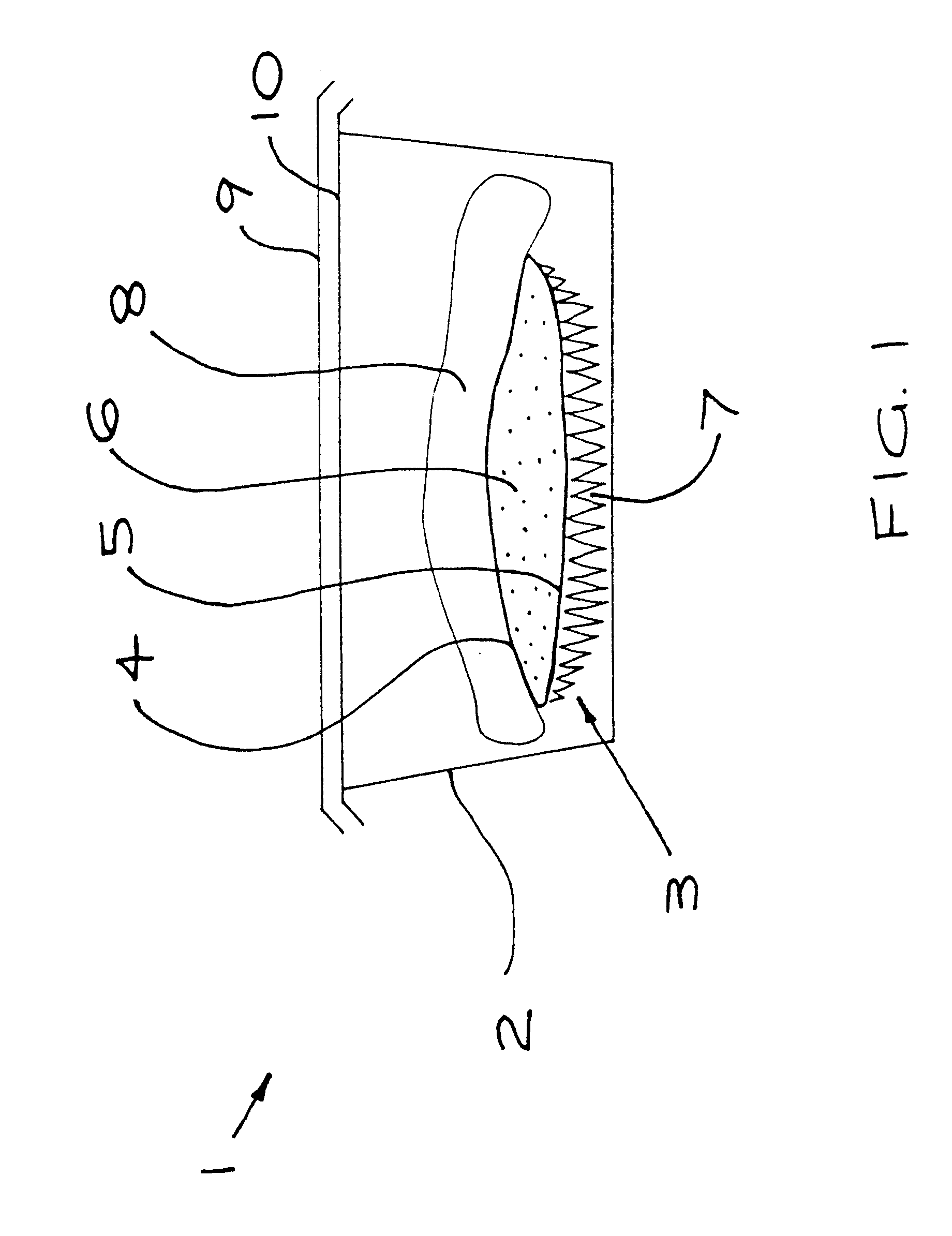Carbon dioxide atmosphere modifiers for packaging
a technology of atmospheric modifiers and carbon dioxide, which is applied in the field of atmospheric modifiers of carbon dioxide for packaging, can solve the problems of current methods and apparatuses used to package meat, spoilage of meat, and gradual browning of meat, so as to prevent over-inflation of packaging and possible seal rupture
- Summary
- Abstract
- Description
- Claims
- Application Information
AI Technical Summary
Benefits of technology
Problems solved by technology
Method used
Image
Examples
example 2
An absorbent pad capable of generating carbon dioxide, but not of absorbing oxygen was constructed as follows:
The mixture was used to formulate a pad for packaging chicken portions.
example 3
A powder of the following formulation was prepared:
1 g of the powder was placed in between layers 1 and 2 in a structure identical to that described in example 1.
The absorbent pad was placed in the bottom of the tray as in example 1 and used to pack 500 g of beef. The tray was gas flushed with 100% nitrogen.
The scavenging sachet maintained an oxygen concentration of less than 100 ppm throughout the lifetime of the package.
example 4
An absorbent pad was prepared as in example 1 except that Layer 3 was substituted with a material containing the following components:
Super absorbent fibres
Viscose fibres
Polyethylene fibres
The composite had a weight of 150g / m.sup.2.
In a standard test using a 0.9% saline solution to compare the absorption capacities the composite fabric absorbed 3500 g / m.sup.2 of fluid versus 1500 g / m.sup.2 for the fabric described in Example 1. This material could therefore be used in applications where much higher levels of drip are produced. The activity in terms of gas absorption and release were very similar to that obtained in example 1.
PUM
 Login to View More
Login to View More Abstract
Description
Claims
Application Information
 Login to View More
Login to View More - R&D
- Intellectual Property
- Life Sciences
- Materials
- Tech Scout
- Unparalleled Data Quality
- Higher Quality Content
- 60% Fewer Hallucinations
Browse by: Latest US Patents, China's latest patents, Technical Efficacy Thesaurus, Application Domain, Technology Topic, Popular Technical Reports.
© 2025 PatSnap. All rights reserved.Legal|Privacy policy|Modern Slavery Act Transparency Statement|Sitemap|About US| Contact US: help@patsnap.com


